Five Most (Wrongly) Disrespected Military Guns
While we all know and respect the most famous military arms — the M1 Garand, the 1911, the M16, etc. — there are many more that did not seem to quite make the cut. But that does not mean they were poor designs. In fact, many of them were quite good, if not exceptional. They simply arrived at the wrong time, or did not receive the necessary support to become an iconic design.
And this carries over to the entertainment world. Firearms such as the 1911 have appeared in so many movies that it has more credits than even Sir Michael Caine (who has appeared in some 160 films). However, some small arms were slow to find their “break out role,” like the AK-47, which didn’t actually appear in a Western movie until 1977 when Kirk Douglas carried one in the supernatural thriller The Fury. Since then, it has become iconic in movies.
By contrast, there are a handful of somewhat “famous” firearms that have earned the respect of gun historians and collectors and yet have a film resume like Stanley Kubrick’s — which consisted of just 13 features and three documentaries in his career.
In fact, these five selected firearms of this article counted together have appeared in only about that many movies combined! These are the small arms that I believe are truly ready for their close-up and starring role.
German FG 42
Arguably one of the most innovative small arms developed during the Second World War, the Fallschirmjägergewehr 42 (“paratrooper rifle 42”) or FG 42 was conceived as a weapon that could provide sustained fire support to Germany’s elite paratroopers. It displayed the characteristics of a select-fire machine gun with the ease of transport of a basic infantry rifle and was intended to supplant the bolt-action Mauser Karabiner 98K rifle and submachine guns such as the MP40. It was also developed before German designers developed the StG44, the world’s first assault rifle.
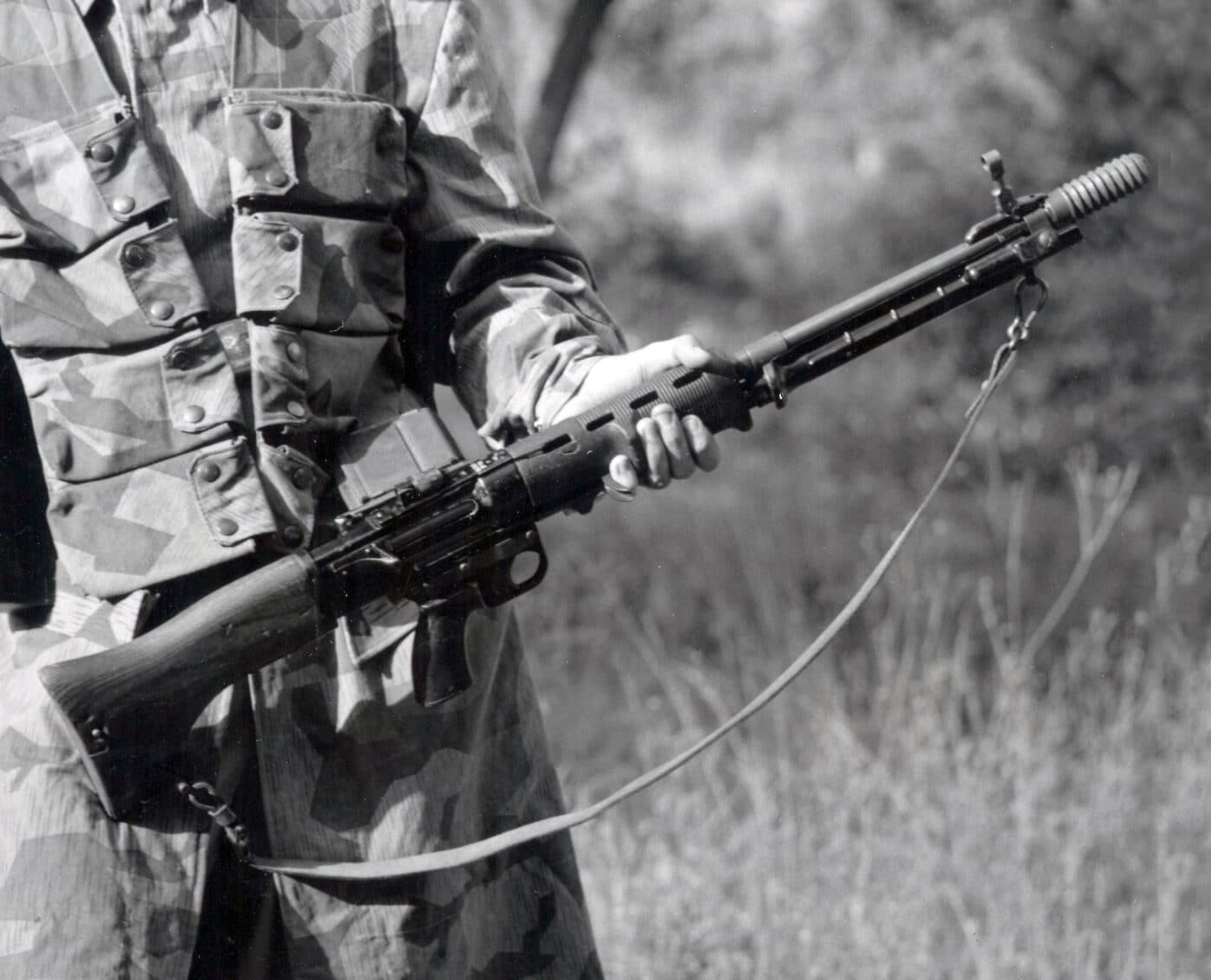
The FG 42 weighed just 4.2kg (9.3 pounds), yet still was chambered for the 7.92x57mm rifle cartridge. In fact, because it wasn’t developed for an intermediate round would be the only reason that the FG 42 and not the StG44 could be designated as the original assault rifle. The FG 42 wasn’t exactly perfect, however, as it was fed from a detachable box magazine that held only 10 or 20 rounds.
Interestingly, the German Army had rejected the concept, but it caught the attention of Luftwaffe head Hermann Goering, who pushed the project forward. However, matters were complicated when two companies — Rheinmetall-Borsig and Krieghoff — began to develop prototypes of the selective-fire rifle.
The Rheinmetall version, which employed a long-stroke gas piston, was eventually selected and production began on the Fallschirmjagergewehr 42. It featured a steeply canted grip along with stamped metal buttstock. The bipods for the weapon also proved too fragile while the stock was easily prone to damage. The grip was also considered by users to be uncomfortable, while it made the weapon difficult to control in full-auto mode.
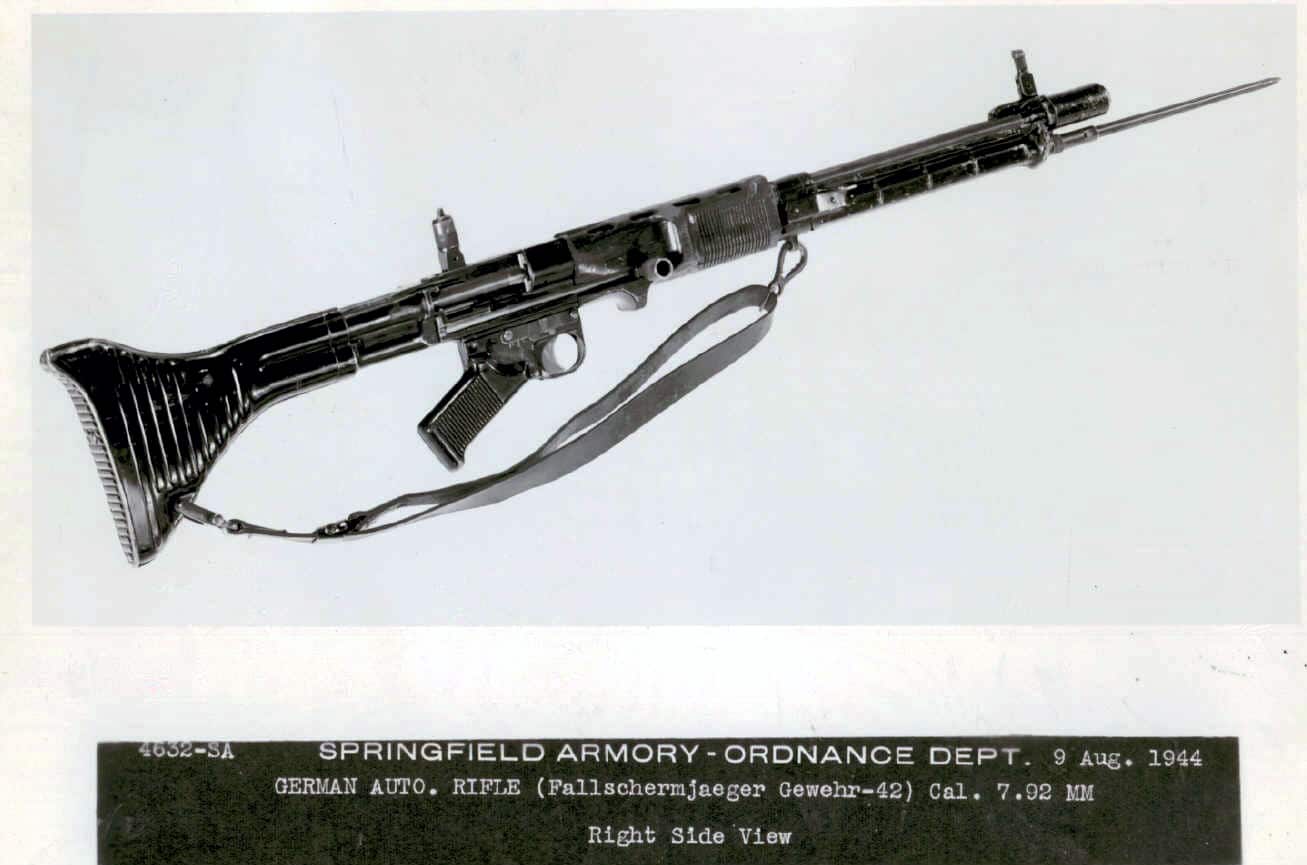
About 2,000 of the first model or FG-42/I versions were produced before the weapon was redesigned by Krieghoff. The FG 42/II model was heavier and slightly longer; featuring a wooden buttstock and a more robust bipod. By the war’s end, about 5,000 of the second model were produced. Because two competing firms produced the FG 42, none of the parts — including the box magazine — were compatible!
The paratrooper weapon was widely used on the Russian Front, in Italy and in Western Europe — although it was never actually used in any large-scale airborne operation. Its lasting legacy came after the war, as the United States military studied the FG 42, and it helped serve as the basis for the American M60 machine gun.
Despite being such an innovative weapon, the FG 42 has appeared in just two movies. An FG 42/I is seen as a non-firing prop gun in the 1976 film The Eagle Has Landed (starring the aforementioned Michael Caine), while one was also seen very briefly in the 2011 war drama Memorial Day.
M1941 Johnson Rifle
Developed in the 1930’s, the short-recoil operated semi-automatic rifle could be best described as the “second best.” It unsuccessfully competed with the M1 Garand rifle but still saw limited use during the Second World War. Designed by Melvin Johnson, a lawyer by profession as well as a United States Marine officer and gun hobbyist, the M1941 Johnson rifle had several unique features including an internal rotary magazine that could be topped off at any time via stripper clips, while the barrel could be removed for compact storage — notably during paratrooper jumps.

Though Johnson campaigned heavily for the adoption of his design with the U.S. military, the U.S. Army rejected it in favor of the M1 Garand. However, the M1941 was ordered by the Netherlands for use by the Royal Netherlands East Indies Army (KNIL), yet fewer than 2,000 rifles were shipped to the Dutch East Indies by the time of the Japanese invasion. The United States Marine Corps found itself in need of weapons and acquired a number of the M1941 Johnson rifles for its Paramarine battalions.
Though it saw service in the Second World War, it wasn’t until 1977’s The Domino Principle that one first appeared in a movie. More recently it appeared in Captain America: The First Avenger (2011), but it was depicted in that film as being a bolt-action rifle!
Interestingly the M1941 Johnson rifle has also appeared in a handful of Chinese-made war films — suggesting that Chinese armorers have at least one of the 22,000 that were produced during the Second World War.
M1941 Johnson LMG
Melvin Johnson has the dubious distinction of being a gun designer who created two revolutionary firearms that never found favor with the military. While developing his semi-automatic rifle, he modified the design as a light machine gun, which Johnson felt was superior to the Browning Automatic Rifle (BAR). Again, the military thought otherwise. While it was lighter, the weapon’s recoil system proved not to be as reliable in combat compared to the BAR’s gas system.
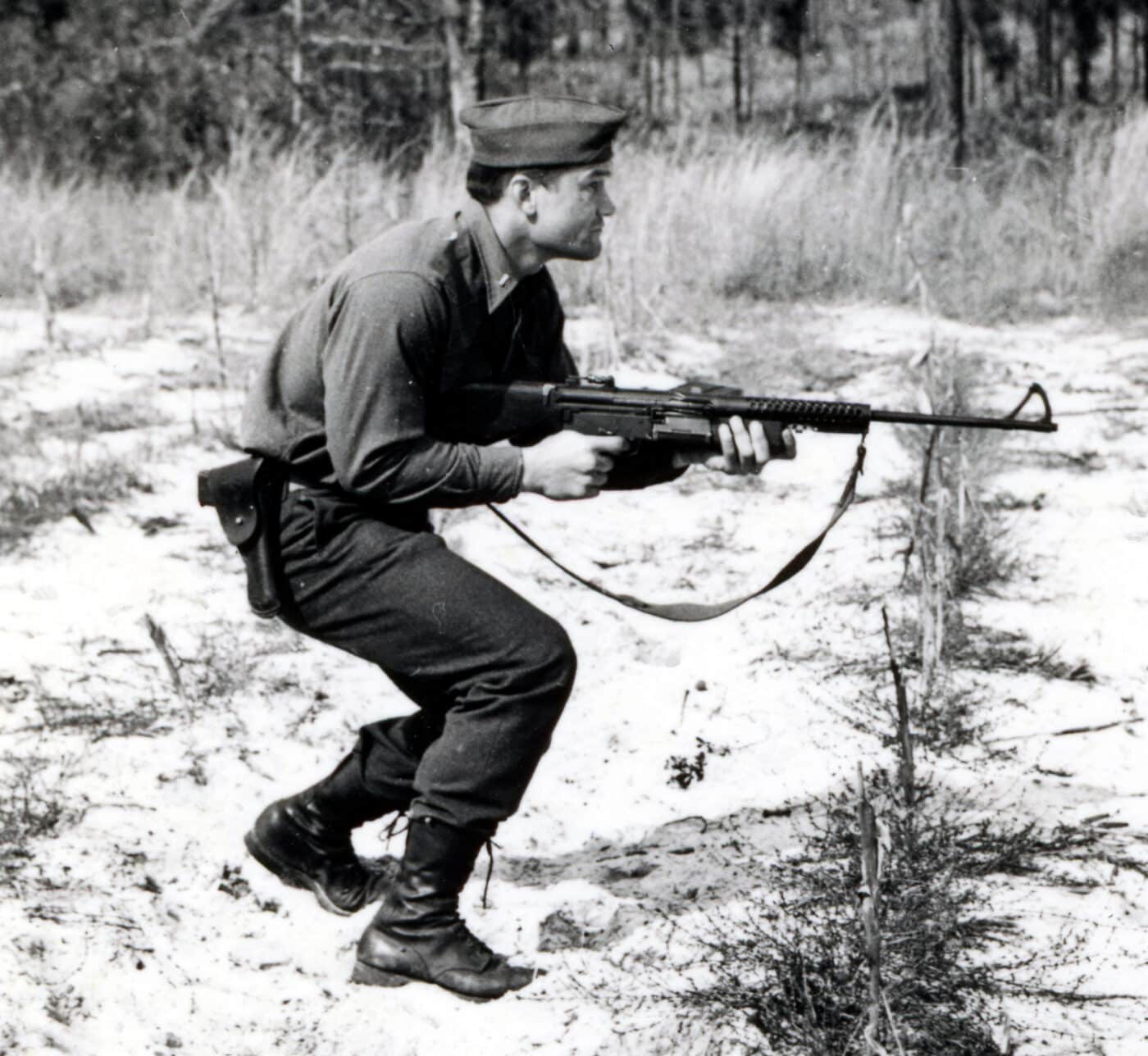
The M1941 Johnson light machine gun was unique in that it fired as a semi-automatic from a closed bolt, but in automatic mode operated from an open bolt. Johnson attempted to upgrade his design with the M1944 model, but there were still no takers in the United States.
Some 9,500 were built, and most saw service during World War II.
The M1941 Johnson light machine gun has no film credits to date of which I can identify. Yet, it remains an infamous firearm and one that continues to be debated among gun history enthusiasts.
Owen Submachine Gun
Though perhaps not as famous as the British Sten submachine gun, the Australian Owen has earned a special place of honor with the Australian people. It was actually developed by Evelyn Ernest Owen, a self-taught teenager, beginning in 1931. Owen spent much of his youth tinkering with firearms and in 1938 had successfully developed a submachine gun that fired .22 LR.
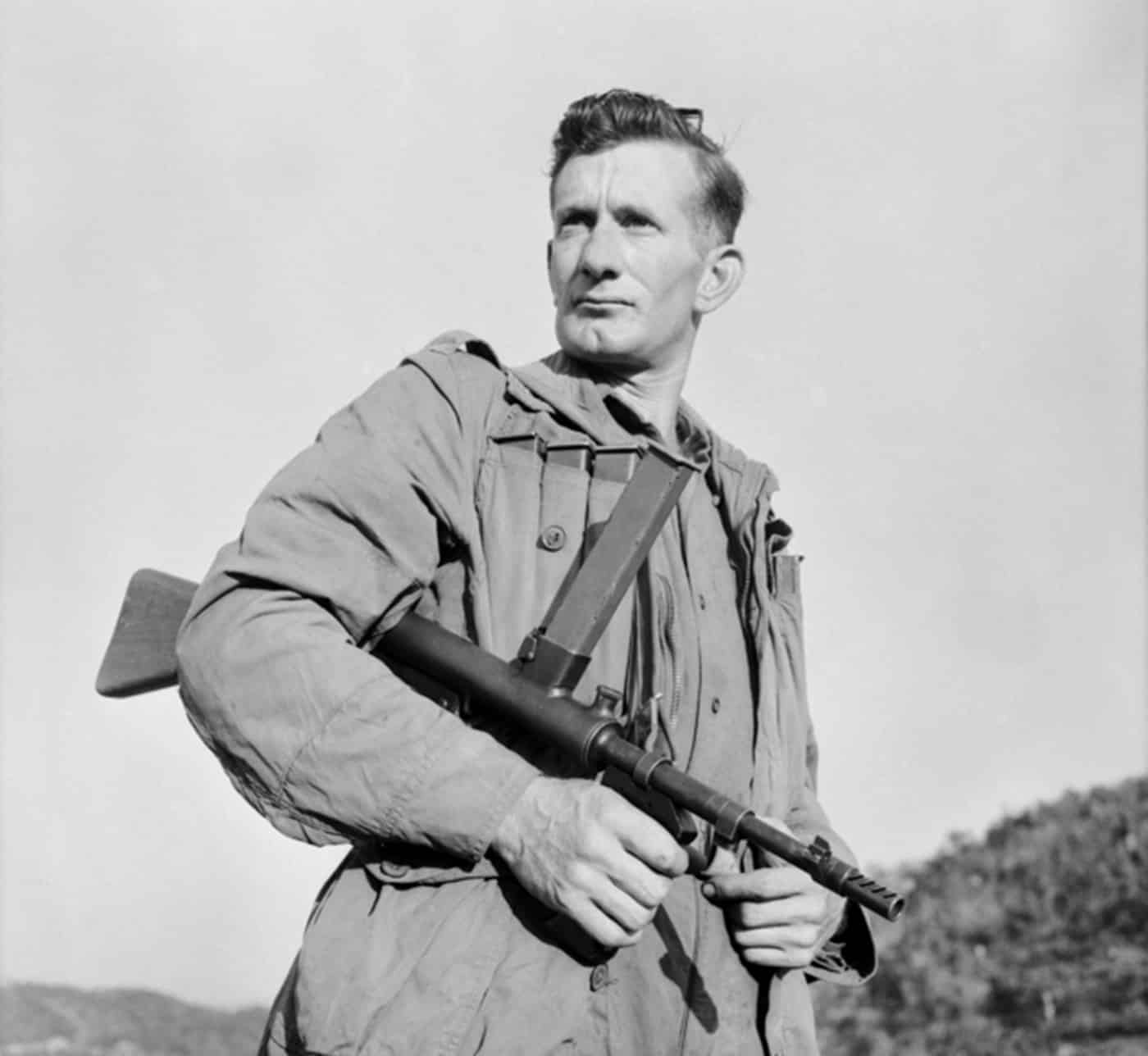
The Australian military wasn’t particularly interested at the time, and Owen joined the army when World War II broke out.
That could have been the end of the story, but Owen pushed on with his design and then found interest from an Australian firm. As the Australian military found itself in need of small arms, Owen was able to continue the development of his firearm design after being formally released from his military obligation, and he worked on refining the submachine gun — eventually settling on 9mm.
Some 45,000 were produced during World War II.
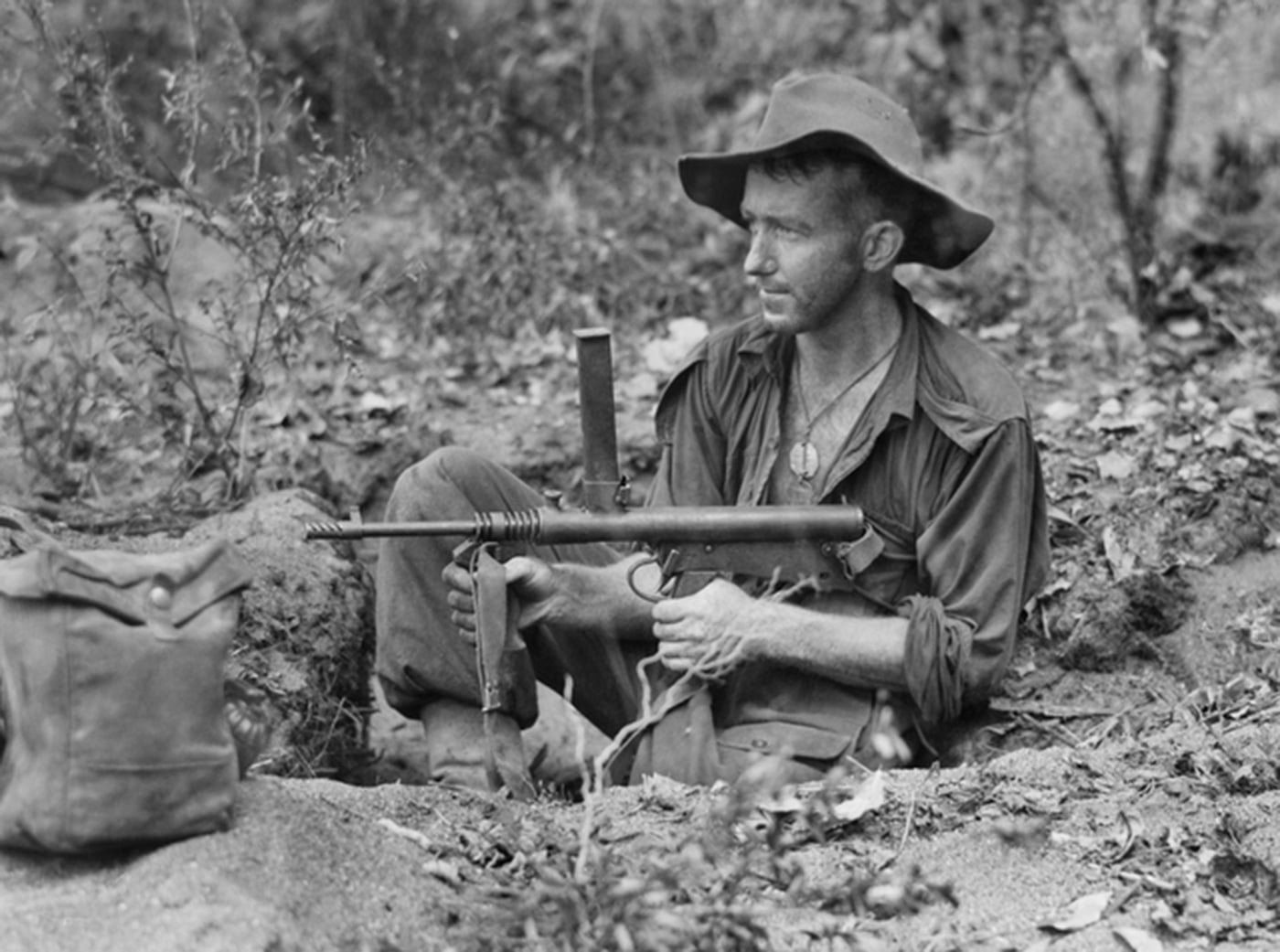
It was a crude weapon, but still proved ideally suited for use in the Pacific Theater of World War II. General Douglas MacArthur even considered equipping American troops with the Owen SMG. It later saw use with Australian forces in Korea and Vietnam.
Sadly, Owen, who had been a heavy drinker for most of his life, died after a gastric ulcer hemorrhaged. He was just 33.
Although the Owen submachine gun saw use in three major conflicts, it has only appeared in half a dozen movies, beginning with the World War II The Cowra Breakout, which was released in 1984, more than four decades after the firearm first entered service. More recently, it appeared in Kokoda (2010) and The Railway Man (2013). It was also seen in reenactments in the 2006 documentary The Battle of Long Tan, and most recently appeared in the 2019 drama Danger Close: The Battle of Long Tan — both chronicling the Vietnam War engagement in 1966.
Stoner 63
Even as he continued to perfect the AR-15, firearms designer Eugene Stoner began work on what was truly a revolutionary firearm with the Stoner 63. It differed from most other assault rifles in its being built around a number of “components,” which allowed the basic weapon to be assembled by the user as a carbine, fixed machine gun, light machine gun (LMG) either magazine or belt-fed, assault rifle, and sniper rifle.
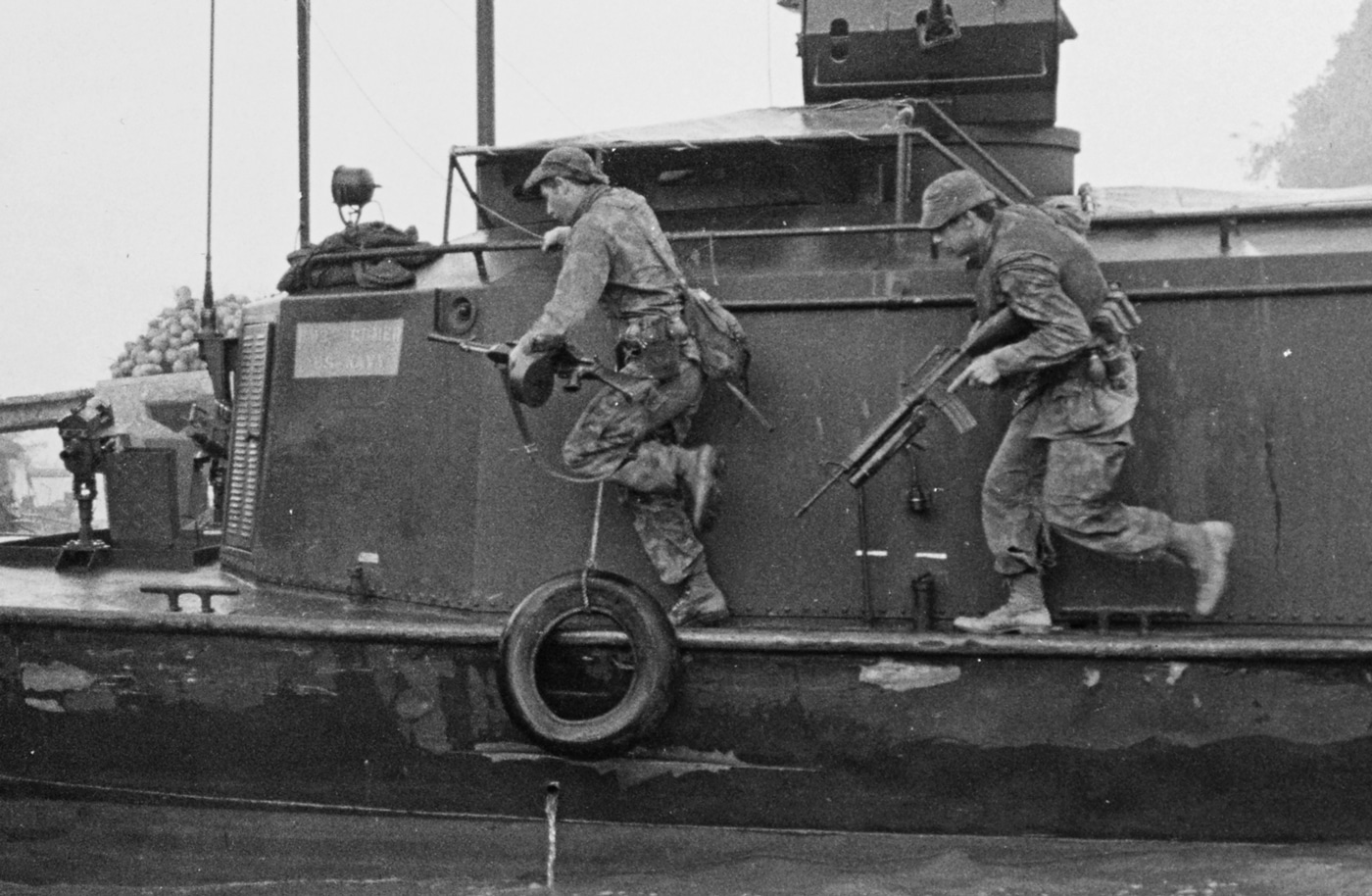
The modular concept proved to be popular with the United States Navy SEALs in Vietnam, but critics failed to accept that its 5.56mm cartridge was actually up for the job. It received additional testing with the U.S. Army’s Green Berets from 1970-71, but it was ultimately rejected for being too overcomplicated and too maintenance-intensive.
The Stoner 63 has yet to appear in a single movie I can identify. Its sole television credit was in an episode of Quantum Leap where it was seen in its “Commando configuration” carried by Scott Bakula’s Sam Beckett.
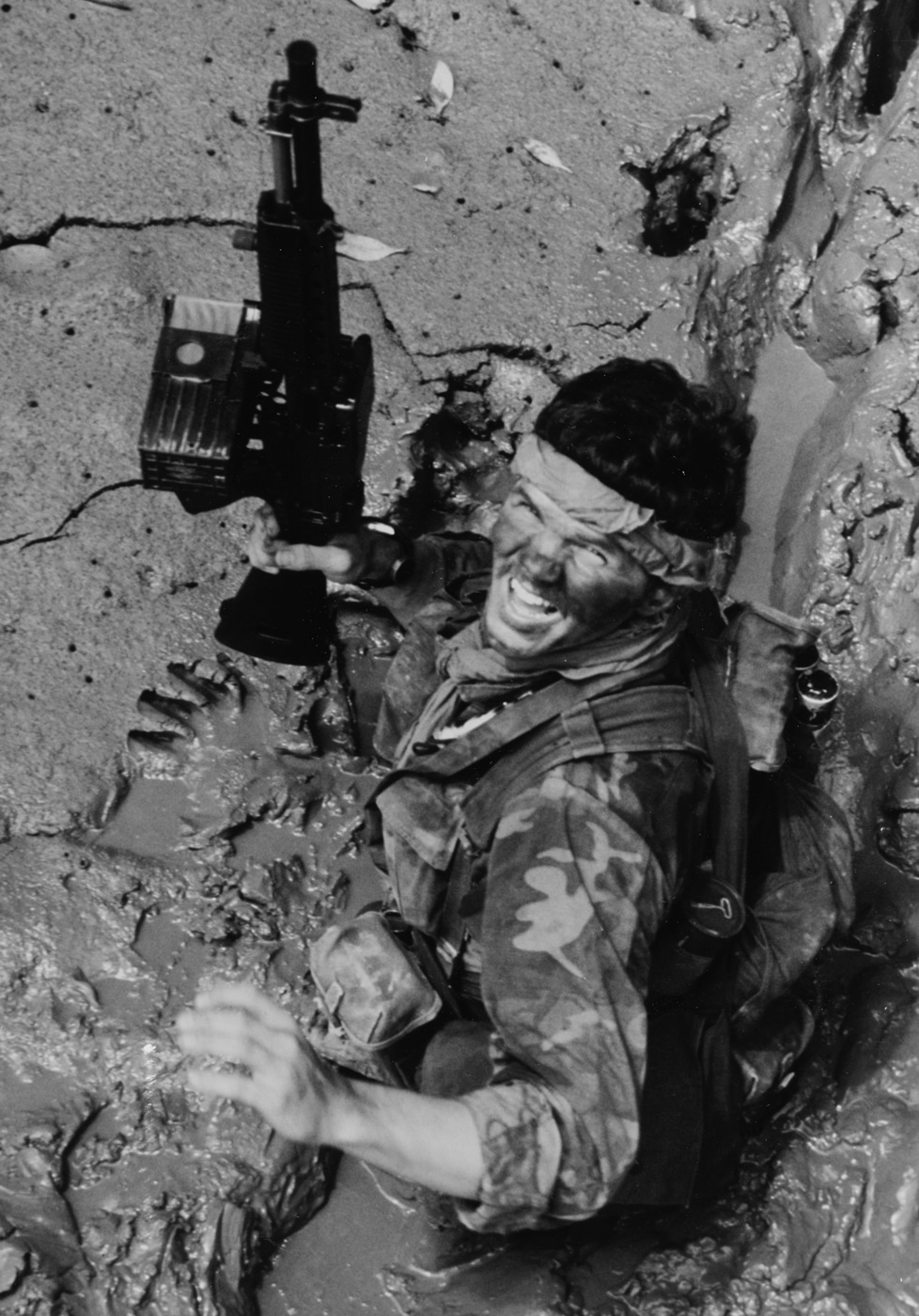
The lasting legacy of the Stoner 63 may be that nearly every little boy (and probably a few girls) who grew up in the 1970s or 1980s playing with plastic “army men” had at least one soldier armed with the weapon. The little machine gunner with the oversized bipod wasn’t using a Bren Gun as some suspected, and in recent years it has been confirmed that the toy’s designers opted to include the Stoner 63A in its light machine gun configuration. Perhaps that’s better than a starring role in a movie!
Editor’s Note: Please be sure to check out The Armory Life Forum, where you can comment about our daily articles, as well as just talk guns and gear. Click the “Go To Forum Thread” link below to jump in and discuss this article and much more!
Join the Discussion
Read the full article here


